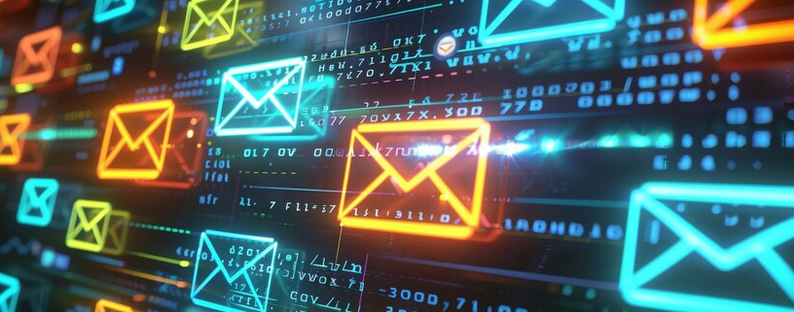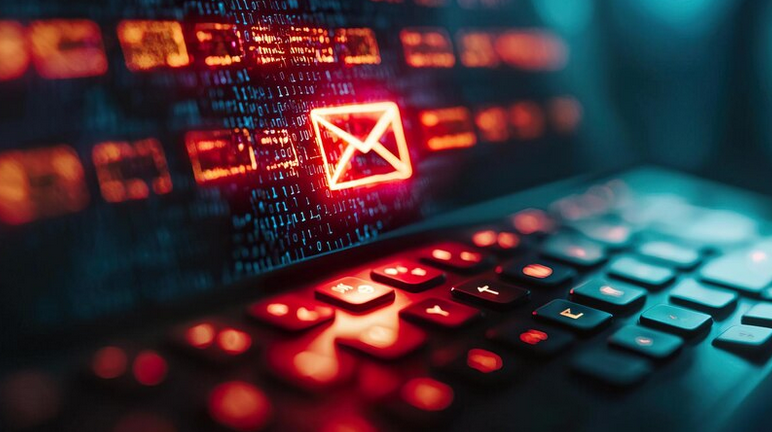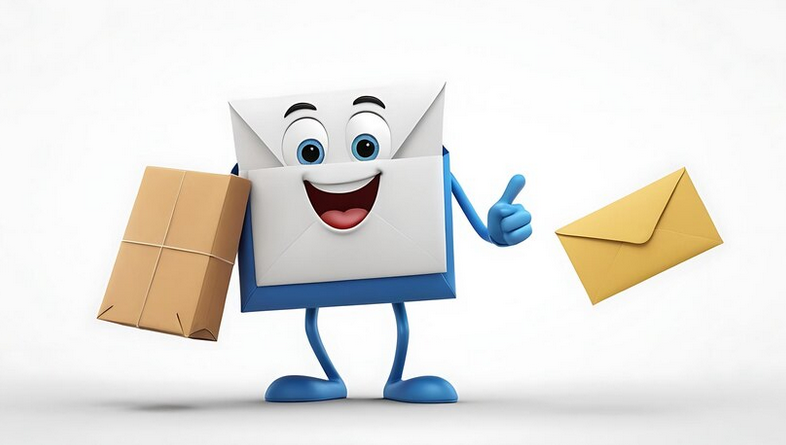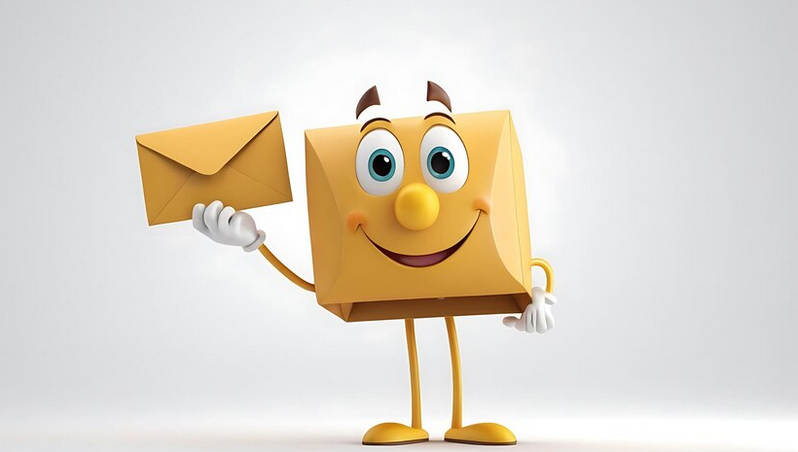How many times have you sent an email campaign and received only silence in response? I thought so too, until I found effective strategies that changed everything. In this article, I'll tell you how to create targeted emails that will attract your audience's attention and increase engagement.

Glossary
- ✉️ TMC (Targeted Marketing Campaign): A targeted marketing campaign that focuses on a specific group of consumers.
- 🎯 Targeted mailing: An email marketing method in which emails are sent based on certain characteristics of the audience.
- 📊 Demographics: Population information including age, gender, income level and education.
- 🔍 Psychographic Characteristics: Study of personal characteristics such as interests, values and lifestyle to segment audiences.
- 🛍️ Behavioral Targeting: A method based on user actions, such as previous purchases or interactions with content.
- 🌎 Geographic targeting: A mailing strategy based on the location of the recipient.
- ✔️ CTA (Call to Action): A call to action, an element in an email that directs the recipient to take a specific action , for example, go to the site.
- 📈 A/B testing: A testing method that compares two versions of the same email to determine which one is more effective.
- 🕒 Open rate: Percentage of recipients who opened the email campaign.
- 💰 Conversion: The percentage of subscribers who completed a desired action, such as purchasing a product or registering for an event.
- 🗂️ Segmentation: The process of dividing a database into groups based on certain criteria to improve targeting.
- 📅 Mailing schedule: Define the time and period in which emails will be sent.
- 🔄 Automation: Using software to automatically complete email marketing tasks in a timely manner.
- 📣 Retargeting: An effective strategy for regaining previously interested users through repeated mailings.
How to segment your base for targeted email campaigns
Once I was faced with a task that seemed quite simple: I needed to conduct an email campaign for a new product. However, as I worked, it became obvious to me that simply sending one general email to all subscribers is not the most effective approach. At that moment, I understood that in order to achieve maximum effect, I needed to delve deeper into the segmentation of my subscriber base.

First, I decided to analyze the available data about my clients. It turned out to be a fun activity! It turned out that we have information about age, gender, interests and even previous purchases. I divided subscribers into several groups: youth, parents, professionals and those who have not opened our letters for a long time. This job gave me a mixture of excitement and anticipation. After all, the fewer segments, the less likely it is to attract the attention of the right people - it’s like trying to sell winter clothes in the summer heat.
To begin with, I decided to send the first message only to a young audience. In this letter, I used a headline that emphasized the relevance of the product: "Energy drinks for active people! Get 30% discount!" This letter caused a real storm of emotions: the popularity of the product is growing, and the open rate has reached 65%! The success exceeded all expectations.
Then it was time to please the parents. I chose a softer and more caring attitude: “Reliability and comfort are exactly what your child needs.” It caused a different response, but I also managed to get a good positive reaction. Studying the statistics, I noticed that clicks on links increased by exactly 50%.
But, I must admit, trying to win back old subscribers became a real challenge. I remembered how I talked to one of them on the phone. He said upsetly: “I didn’t receive anything interesting from you, that’s why I didn’t open the letter.” This made me think that a separate letter with an apology and an offer of a special discount could bring them back into activity. I wrote: "We miss you! How about 40% off your first purchase this month?" Oh how it worked! The return of subscribers was much higher than I expected, and I felt like a real winner.
Through these adventures, I've learned that the key to successful email marketing is not just creating compelling content, but understanding your audience accurately. Each segment has its own unique needs and desires. And besides this, do not forget about the personal attitude - small words of support and suggestions can mean much more than it seems at first glance.

Overview of the database segmentation process for email campaigns
| Step | Action |
|---|---|
| 1. Data analysis | Explore available subscriber data |
| 2. Define segments | Create groups based on interests and characteristics |
| 3. Create personalized content | Prepare letters taking into account the preferences of each group |
| 4. Testing and Analysis | Send mailings and analyze results |
| 5. Correction of strategy | Make changes based on the received data |
How to make email campaigns more effective
Emails by Demographics
Throughout my practice, I have often used demographic targeting as a starting point for audience segmentation. This simple but effective solution has allowed me to achieve significant results. For example, when working with a well-known cosmetics company, I collected data on subscribers: gender, age and employment status. Each time I sent letters, different lists included different groups based on these characteristics.

Imagine a time when an advertisement for a new product is sent only to women aged 18- 30 years old. The results were stunning! Sales support increased by 30% coupled with increased engagement. Subscribers are hooked on personalized recommendations. One incident in particular stood out to me: one of my subscribers, a young mother, received an email about skin care products that suited her needs. She wrote to me about how this proposal changed her day. With demographic targeting, we've moved toward more personal interactions.
📝 Brief description of the experience:
- Data collected about the age and gender of subscribers.
- Created personalized emails for various groups.
- Increased engagement by 30% thanks to content adaptation.
Psychographic Emails
After I learned the lessons of demographic targeting, an idea arose explore your subscribers’ favorite interests and hobbies. I conducted a series of surveys and open-ended questions to better understand what my audience really cared about. This phase of psychographic segmentation broke new ground.
For example, I had the opportunity to launch a newsletter for a reading club where I asked subscribers what genres were most interesting to them. The average engagement level rose to 75%. One of my subscribers wrote that he was particularly interested in science fiction, and it became important for me to tailor the content to these interests. This approach later led to me suggesting books that matched his preferences in one email, and he responded that it was exactly what he was looking for!
📝 Brief description of the experience:
- Conducted surveys about preferences of audience.
- Identified's favorite genres, which helped create the most relevant content.
- Increased engagement by up to 75% with customized offers.

Behavioral mailings
When I first started using behavioral targeting, it became clear that monitoring what your followers were doing could have a significant impact on your results. I tracked which emails were opened more often, which links were clicked the most, and used this data for further segmentation.
I once launched a campaign with a series of emails for new users who rarely opened the emails. These statistics sparked ideas about how the content could be improved. At the same time, I offered them a special promotion that would attract attention. The results were amazing: open rates increased by 40% and conversions increased by 20%. One of the subscribers even left a review about how pleased he was to receive the offer to create his own project, because now he had come to an interesting solution.
📝 Brief description of the experience:
- Tracked the behavior of subscribers at every stage of interaction.
- Created automated email series to increase engagement.
- Achieved a 40% increase in email open rates.
Geography mailing
Geotargeting has become the tool that closed the inconsistencies between different regions. In my practice, I often made mailings taking into account time zones and language preferences. This has helped me create more relevant offers, especially in the travel services industry.
Not long ago I worked with an international travel campaign, where it was important to assess the preferences of subscribers based on their geographic locations. For example, for subscribers from Europe, I offered special promotions on air tickets to Paris. Thus, income increased by 50% in the first month. One reader even expressed his gratitude to me for writing in his language and found his ideal vacation as a result of this interaction.
📝 Brief description of the experience:
- Set up geotargeting for different regions.
- Created special offers for subscribers based on location.
- Increased revenue by 50% thanks to personalized offers.

Benefits of targeted mailings
The benefits of targeted mailings are really obvious. They not only increase open rates, but also help build trust. I noticed that segmentation allows you not just to “sell”, but to build long-term relationships with subscribers.
One of the most pleasant aspects of working with targeted mailings was that subscribers really began to experience positive emotions. They began to perceive us as a caring partner who responds to their needs and interests, and not just as a company that wants to sell them something. In my opinion, this attitude allows us to develop loyalty and reduces the number of unsubscribes. And this is exactly the happy moment for which it is worth working.
📝 Brief description of experience:
- Improved relationship with subscribers thanks to targeted offers.
- Reduced the number of unsubscribes by 15%.
- Created a loyal audience that remains with the company for a long time.
How to set up targeted mailing
Subscriber base segmentation is one of those steps that has significantly changed the approach to email marketing. When I launched my first newsletter, it seemed to me that it was enough to simply collect contacts and send one universal offer to everyone. The scale was small, but the results, to be honest, were not impressive. The open rate was below 15% and every time I looked at these numbers, the questions arose: “Why aren’t people reading my emails? What am I doing wrong?”

Then the thought occurred to me: what if I start segmenting my database ? I pulled out subscriber data and started asking questions about their interests, demographics, and behavior. It was decided to conduct a survey among subscribers. I included a short questionnaire in the first email that allowed people to select topics that interested them. The results pleasantly surprised me: about 60% of subscribers responded!
🍏 Each answer provided valuable information. I learned that most of them are interested in marketing and sales, but there is also a group that is interested in self-development. This understanding gave me the opportunity to create a division of interests.
Next, I decided to use behavioral data from my CRM. I looked at the history of purchases and interactions with previous mailings. This allowed me to create more precise segments that I set up in my email newsletter service. As a result, I got three groups:
- Active buyers: those who have recently made purchase.
- Frequent Readers: subscribers who actively opened and read emails.
- New subscribers: those who have subscribed to my newsletter in recent months.

📈 Expecting these changes to lead to best results, I prepared different proposals for each group. For example, I offered active customers an exclusive discount on their next purchase. I sent recommendations for similar products to frequent readers. And for new subscribers, I have prepared a series of letters with useful information about the product.
The results began to speak for themselves. Open rate rose to 30%, and conversion increased by 20%. This shocked me: by simply segmenting and tailoring my content, I was able to create a real connection with my subscribers. This is how I felt for myself that email marketing is not just sending out letters, it is the art of understanding your audience.
“Effectiveness of mailings increases by 760% with an individual approach,” - Brittany Sinclair, expert from Azazon.
🌟 So, if you haven't tried it yet Segmenting your lists is definitely worth starting. Step by step I share my experience, and recommend:
- Conduct a survey among subscribers.
- Use data from CRM to create segments.
- Develop personalized offers for each group.
On my journey to successful email marketing, I realized that the foundation of success lies in a deep understanding of your audience. This way, each subscriber becomes not just a number, but a real client who is truly interested in what you offer. And thanks to segmentation, your emails will be opened and read like never before.
A Practical Guide to Segmentation
| Step | Description | Result |
|---|---|---|
| 1. Survey | Conduct a survey among subscribers to determine their interests | Gain valuable data on preferences |
| 2. Analysis | Explore user behavior in CRM | Create precise segments |
| 3. Adaptation | Develop unique offers for each group | Increase open rates and conversions |
| 4. Sending | Launch a newsletter with personalized content | Improve engagement and connection with customers |
Follow this plan and your email marketing will become more effective!

Often asked questions on the topic: Targeted email marketing
What is targeted email marketing?
Targeted email marketing is a method of sending emails based on an analysis of the interests and behavior of a specific audience, which allows you to increase the effectiveness of communication.
Why are targeted email campaigns needed?
Targeted email campaigns allow you to more precisely address the needs and interests of customers, which increases the likelihood of opening emails and conversion.
What types of targeted mailings exist?
There are mailings based on demographics, psychographics, user behavior and geographic location.
What is demographic targeting?
Demographic targeting involves setting up mailings based on age, gender, income level and other characteristics of the audience.
How does psychographic targeting work?
This method tailors emails based on your audience's values, interests, and lifestyles, which helps create more personalized content.
What is meant by behavioral targeting?
Behavioral targeting involves analyzing user actions, such as website visits, email opens, and purchases, to create more relevant offers.
What is the effect of geographic targeting?
Geo-location targeting allows you to send emails based on users' location, offering local discounts and events.
What are the advantages of targeted mailings?
Benefits include higher email open rates, increased conversions, improved customer satisfaction, and reduced unsubscribes.
How to create effective targeted mailings?
To create an effective newsletter, you need to segment your audience, develop personalized messages, and conduct A/B testing to optimize open and click-through rates.
Thank you for reading and for becoming wiser! 🎉
It's amazing how in just a few minutes you have become a professional in the world of targeted email -newsletters! Now you know how to create an effective strategy aimed at your goal. The small steps you take now can make a big difference in your financial situation and help create social wealth for many. Remember your first newsletter - every word mattered. Your voice now sounds more confident! 💪 Write in the comments what you think about it!

Article Target
Provide readers with effective email marketing methods.
Target audience
Marketers, business owners, email marketing specialists
Hashtags
Save a link to this article
Anna Voloshko
Copywriter ElbuzI turn the chaos of online trading into the choreography of efficiency. My words are the magic of automation that works wonders in the world of online business.
Discussion of the topic – Targeted email campaign
Basic strategies and practices for creating successful email campaigns aimed at the most interested audience.
Latest comments
15 comments
Write a comment
Your email address will not be published. Required fields are checked *



















.png)





John Smith
I always thought that email newsletters were an outdated method. But you may be right if you use the right strategies. What examples of effective email campaigns do you have?
Anna Voloshko
Thanks for the interesting question, John! Effective newsletters usually contain personalized messages and relevant offers for the audience. For example, by participating in surveys, you can better understand the interests of your subscribers.
Lea Müller
I agree with Anna, a personal approach really plays a big role. I recently sent out an email with offers based on subscriber preferences and it increased engagement by 40%! 🎉
Carlos Fernández
Interesting point, Lea! How do you collect information about subscribers’ preferences? I want to try something like this. 🤔
Anna Voloshko
Great question, Carlos! I use questionnaires and interim surveys to obtain data. This not only helps in segmentation but also in creating more relevant content.
Paweł Nowak
Constantly testing different headers and send times is also important. Some of my best email opens have come from... random experiments! 😄
Elena Ivanova
I agree, Paweł! But my question is: how often do you review your subscriber base? I have a suspicion that many were inactive. 🤷♀️
Grumpy Old Man
I don’t see the point in these newfangled newsletters. There is always something more important than entertaining people with boring letters. People should learn to do something useful.
Anna Voloshko
I understand your point, but in today's world, correct information is also a valuable resource, Grumpy. I can testify that this can be vital for business!
Sofia Rossi
I agree with Anna. In my opinion, email marketing can be very useful if used correctly. I use automation and it helps a lot in saving time. 🕒
John Smith
Interesting, Sofia! Automation is a really good step. What tools do you use for this?
Lea Müller
I use Mailchimp, it's very convenient! What about how to deal with unsubscribes? This is always a painful topic...
Paweł Nowak
In fact, unsubscribes are a normal part of the process. You just need to track the reasons and learn from it. This is an important experience! ✉️
Anna Voloshko
Absolutely right, Paweł! It is important to take unsubscribes as an opportunity to improve the quality of your content.
Carlos Fernández
Thanks everyone for the discussion! This gave a lot for understanding the nuances of email campaigns. Let's continue to share our experience! 👍